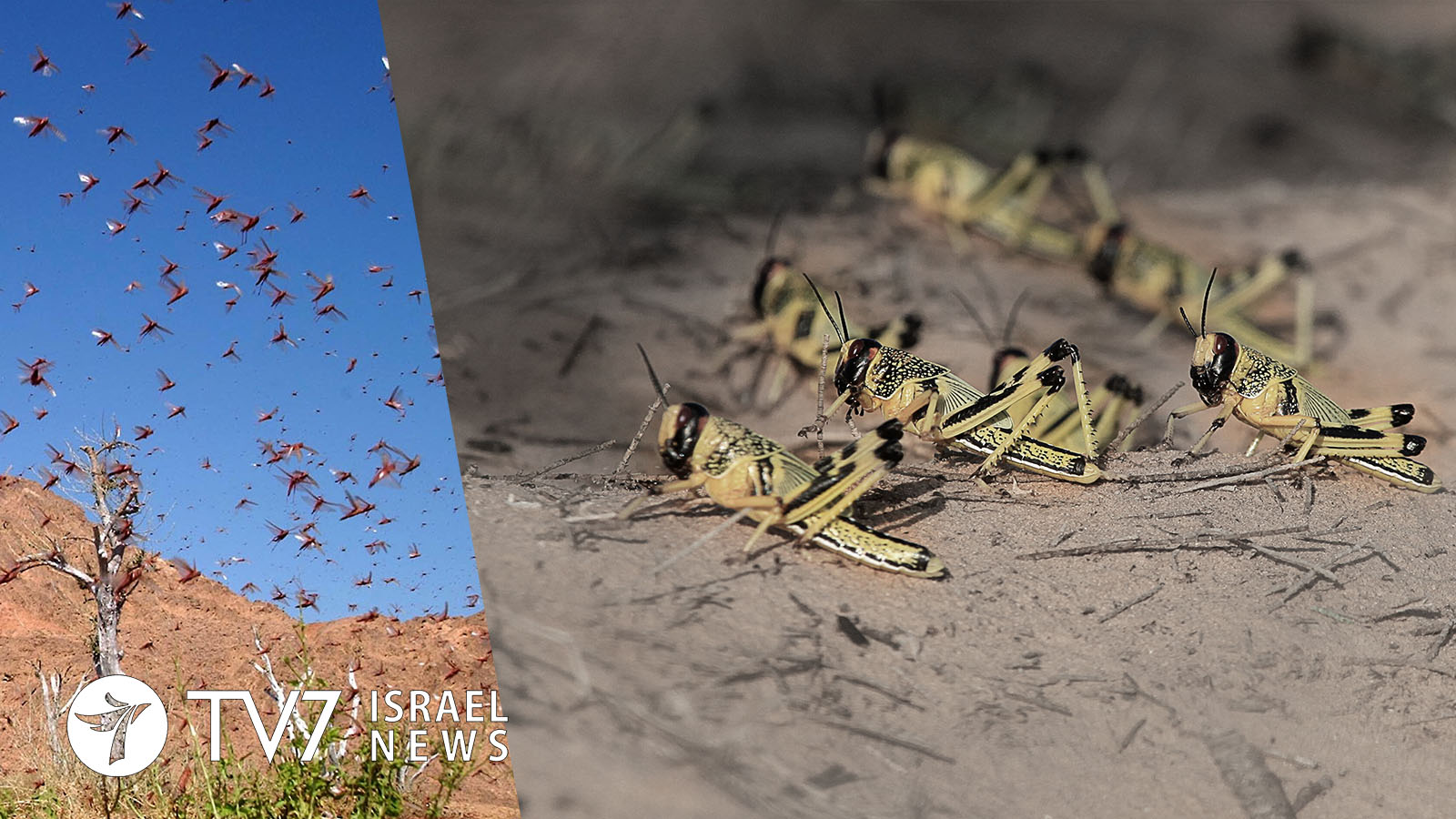There is still no indication that the massive locust invasion decimating parts of the African and Asian continents will spread to Israel. This, according to the most recent Desert Locust Situation Update, issued 24 March 2020 by the Locust Watch Report of the United Nations Food and Agriculture Organization (FAO).
The Desert locust is considered as “the most destructive migratory pest in the world,” according to Locust Watch, which forecasts migration and breeding patterns on a country-by-country basis.
City-sized clouds of locusts can fly up to 150 km (90 miles) a day with the wind, and adults can consume roughly their own weight in fresh food per day. In fact, experts say that a single square kilometer swarm – estimated to consist of some 40 -80 million insects — can eat as much food as 35,000 people – in just one day. The FAO warned last month that, left unchecked, the number of locusts in East Africa could explode by 500 times by June.
The situation remains “extremely alarming in the Horn of Africa, specifically Kenya, Ethiopia and Somalia where widespread breeding is in progress and new swarms are starting to form, representing an unprecedented threat to food security and livelihoods at the beginning of the upcoming cropping season,” says the FAO.
Farmers in Kenya are now bracing for a second onslaught of the crop-devouring pests, which have so far infested 26 counties in the East African nation. Hopper bands have continued to develop, with a rising number of first-generation immature swarms forming in northern and central counties. These swarms will be ready to lay their own eggs from the first week of April.
As the eggs they have laid hatch, food experts have warned a second wave of young locusts will further destroy crops and vegetation, intensifying hunger and environmental damage.
The United Nations is warning that more than 3 million people already face serious shortages of food in Kenya’s semi-arid areas due to alternating bouts of drought and flooding, and that the new swarms represent “an unprecedented threat to food security and livelihoods at the beginning of the upcoming cropping season.”
Even though aerial and ground control operations are ongoing, further concentrations are expected in Kenya’s Marsabit and Turkana regions.
Scientists say the appearance of the desert locusts may have been exacerbated by global warming. Warmer seas have given rise to more cyclones in the Indian Ocean, which in turn lead to heavy downpours along the Arabian Peninsula and the Horn of Africa – which create ideal conditions for locusts to breed.
High rainfall in Kenya during the last quarter of 2019 also supported the locusts’ multiplication and spread when combined with strong winds, the Associate Director for Livelihoods and Resilience at World Vision Kenya, William Marwanga, told Reuters.
Other swarms crossed into Kenya from Somalia and Ethiopia at the end of last year. Widespread breeding is also in progress in both countries. Hopper bands are present in Ethiopia’s Oromiya and SNNPR regions, including the Rift Valley. Aerial and ground control operations are being used to combat the insects, amid the formation and maturation of a new generation of immature swarms.
In South Sudan, several mature swarms from the south appeared in the southeast near Torit on 18-19 March; at least one moved to Juba on 21 March, continuing to Bor on the 23rd and flying in the direction of southwest Ethiopia.
Hopper bands in Yemen are continuing to form on southern coast near Aden, and immature adults starting to form groups. Scattered adult locusts have also been discovered on the northern Red Sea coast of the Republic, which is located at the southern end of the Arabian Peninsula in Western Asia.
Iran is also facing its own locust infestation on its western Hormozgan coast of the Persian Gulf, where hatching began over the past few days. More hatching expected in the southern Khuzestan Province bordering Iraq and the Persian Gulf, the adjacent vast costal region of Bushehr and in the southern part of the inland Fars Province. Late instar hopper bands also forming near the port town of Jask, situated on the Gulf of Oman.
Countries where the locust situation has been described as “under control” by the UN’s Food and Agriculture Organization include Sudan, where drying vegetation on the Red Sea coast has led to a decline, with scattered adults only present on the southern coast. Vegetation is also drying out on central and northern coast of Eritrea, where control operations continue against groups of late instar hoppers and immature adults on the Buri Peninsula and on southern coast near Tio. Very limited control operations are being carried out in northern Saudi Arabia against a few mature adult groups. In Oman, control operations are underway against hopper groups in northern interior, as well as newly-hatched groups on north coast. There have been reports of control operations in the southeast Iraq, and further details are expected. In Pakistan, control operations are being implemented to prevent the formation of hopper groups in the Baluchistan and Dera Bugti districts, as well as egg-laying adults in Khyber Pakhtunkhwa. India is currently experiencing an entirely “calm situation,” with no locusts reported.
— By Erin Viner
